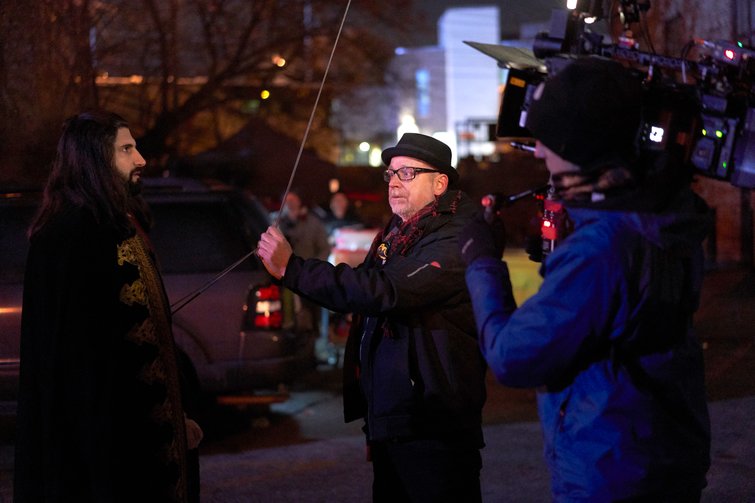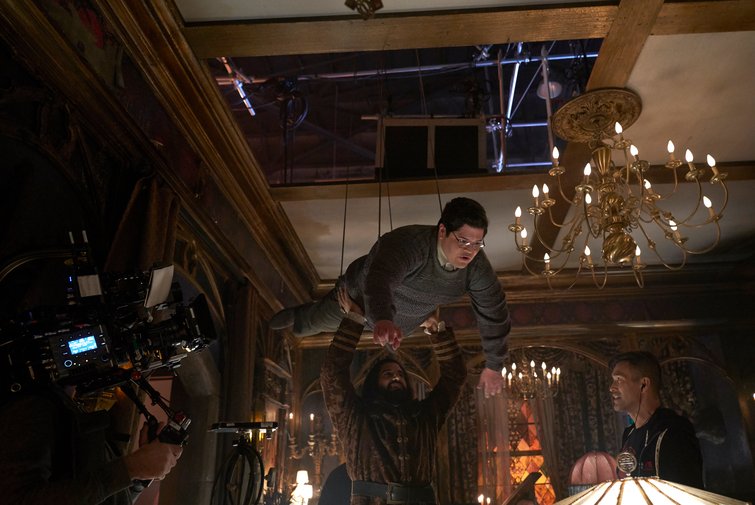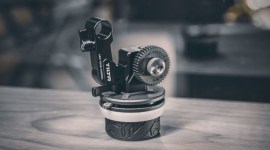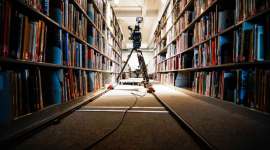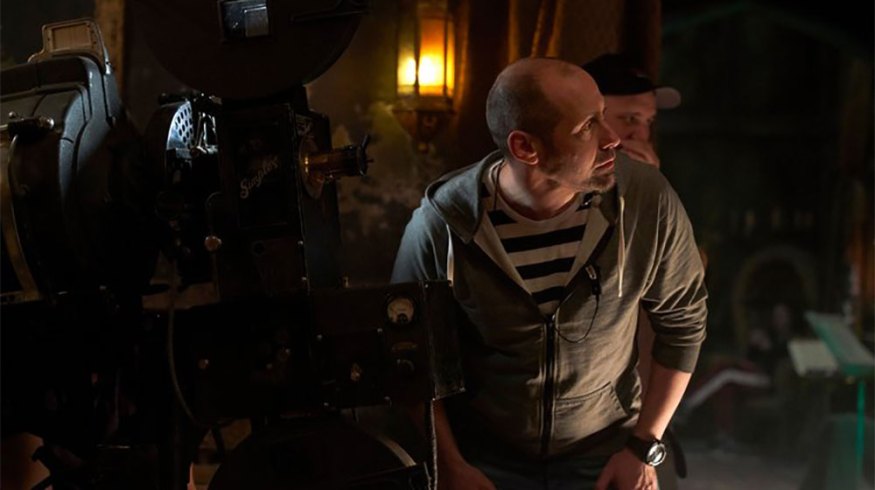
Industry Interview: DJ Stipsen, DP of “What We Do in the Shadows”
PremiumBeat sat down with DJ Stipsen to discuss his unique approach to lighting the dark world of FX’s “What We Do in the Shadows.”
As the director of photography for FX’s What We Do in the Shadows, DJ Stipsen faces some unique cinematography challenges. We sat down for some insight into his process and how he got to where he is today.
PremiumBeat: What’s your background and how did you get into cinematography?
DJ Stipsen: My dad works in the industry, so I grew up going to the film sets and I ended up getting a job as a film trainee at the state broadcaster, here in New Zealand. Through that, I met other young people who were starting out in the industry. We did lots of music videos together. One of the guys that I worked with, we ended up doing quite a lot of documentaries together and carried on making music videos.
From there, I got into doing television drama as an operator and then moved my way up through that world to become a DOP. Still, I do quite a lot of television dramas, as well as, obviously, also doing film at the same time. It is a long road and still going.
PB: I assume your background in documentary filmmaking helped out a lot with the mockumentary style of What We Do in the Shadows?
DJS: Yes, definitely. It is a hyper-real form of documentary. I sort of feel it is verging more on the reality style than it is on a documentary style. It feels to me it is a bit more like that television series Cops. There is a lot of running around. We introduced the onboard camera lights because it was a real signal to the audience that it was a camera crew. We really wanted to separate it from drama. We felt like the onboard light was a really good idea — to tell the audience there is a crew who are documenting what is happening in front of them and it is neither drama, it is reality right in front of them.
PB: You were also the DP on the 2014 film What We Do in the Shadows that this series is based upon. How was the adjustment, moving from the feature version to the episodic version?
DJS: It was a bit of a transition, in some ways, because episodic means you can do more storytelling. Whereas in television, you can keep most of the really good stuff because you’ve got ten episodes to explore the story. I find it a little bit more rewarding, in some ways. Television gives more than film, anyway, to be honest. It is long-form filmmaking now, as opposed to fast turnaround.
The difference between the film was pretty anarchic. There was a script and we shot the film chronologically. The feature was a script, but only the shooting crew and Taika and Jemaine were allowed to see the script, so no other actors were allowed to see the script at all.
PB: I love the energy that you captured with the camera. What was your process to making it feel organic and energetic?
DJS: I didn’t get to operate on the TV series because of Union rules in Canada. I had to find two camera operators who were intuitive, and who were able to basically adapt and pull focus with no rehearsal, because the actors should be able to go anywhere they want. Each room was already lit and if the actors wanted to leave the scene and go anywhere they wanted, we had to follow them. That was the rule. So basically, what that means is that the operators are not putting down two pieces of tape and go, “Okay, well, this is position A, this is position B, and you are going to push the dolly.” It was really like they know what’s happening on that day and we would plot the scene with the actors and they would go, “I am going to do this, I am going to talk over here.”
Then, we had to divide the scene up between the two cameras because of the impromptu nature of the show. All the characters had to be on camera all the time, or at least have the cameras have the ability to pan to that person. So, we really lean quickly on the operators to find the focus point; they were the crew storytellers.
I was really blessed they were so good. I mean the first week, we worked out our roles and how we were going to do it, and all that. After that, it was really good.
PB: You said that you had to light the whole world so the actors could move throughout the scenes, freely. So, what was your broad-stroke approach to the lighting plan?
DJS: It’s interesting because it had to look like there was just existing fixtures in the house. The house probably had the least restrictions out of anywhere. With the house, we should really be able to go anywhere anyone wanted to. We have the added complexity that the series is full of wire work and VFX and the whole ceiling of the house was removable in sections. We had to do that so that we could fly the actors or get them to climb walls (or whatever) with wires. We had to add the ability to shoot that kind of a snippet of the dialogue scene; but in the dialogue scene, one of the vampires starts flying around in a rage, or something like that, so we had to have the ability to not change the lighting in the theme for the wire work.
What we ended up doing was I had a prototype that I built from New Zealand, of our own lights, I call the cube light. It’s a square box made of aluminum frame and it has removable panels that you can pull on and off. And, in each of these boxes is a light bulb (an LED light bulb), we can send it up and down and change the color. And, on the four sides of the box are panels of fabric, unbleached muslin. Then, on top of those panels, you could put duvetyne, so you can have just one side of the box exposed to have light coming out of one side, or you could expose all sides. So, we made a few of those.
They were really good because we made small ones and big ones. The small ones you could hide on the floor below frame, and under chairs and behind tables, and all those things which we needed to do to get light. Then, we would run LED strips on the back of chairs or on the back of the table, where I knew the camera wasn’t going to go or wasn’t going to tilt down there. In the practicals, we put flicker bulbs, so we bought a whole bunch of LED bulbs that flicker. It’s the first time, actually, that I found domestic LED bulbs that didn’t pulse on camera and do bad things. They shoot really good things and they look like firelight.
PB: The cube light sounds fascinating. It just seems like it would speed up the production process, too.
DJS: Yes, absolutely. And because there are cubes, you can just either rig them or just put on another flat surface. As opposed to the round china ball, which is really hard to rig and they’re annoying.
PB: And easy to control, too.
DJS: Yes. It’s really good. We use them all the time. We hang them on the chandeliers, if we knew the chandelier wasn’t being shot. We also had light in the grid, which would punch through. The ceilings were canvas — stretched canvas across wooden frames — but they were light and easy to lift out. We had top light in each room. Really, I am not a big fan of top light, but we had it as insurance.
PB: I assume a very soft top light?
DJS: Yes, very soft. It is a Skypanel. It’s controlled back to a board and is in a box and has a frame underneath and it will go through the canvas, as well, so it is softer again. We had, in the foyer, four S-60s — two were green because it was a green chandelier above the staircase.
The other problem that I knew I was going to encounter in the house was that everything is old, so everything has that yellow, warm feel. When you get into the grade, you have got no color separation. The actors are vampires, and they are wearing black, some deep green, so everything’s down that end of the spectrum. So, I knew I had possibly three colors all throughout the house. A good example, we had a green glass chandelier in the foyer. Above that, we hung two S-60 soft boxes and we dyed them a matching green. So, always in the foyer we had this green top light. Then, also in the foyer, we had this skylight and through that we would push — on the rare occasions that we shot the house in the daylight — daylight through very soft. Then, mostly at night, we would dye sky panels.
On location, we would put lavender gels on the lamps, that was our moon for the show. The reason for the lavender is that on camera, it is quite an odd color. So, you can separate it later on the color timing and either enhance the color or drag it out and make it white. That’s a really good thing in a house full of yellow. We want to have some white in the picture so that you can move your eyes on the piece of white in the picture and appreciate the color again — that was the idea.
PB: What was your camera and lens package?
DJS: The pilot was shot on ALEXA-Mini by Christian Sprenger. By the time the series was picked up by FX, I think it was almost nine months. During that time, I did quite a lot on the Sony VENICE Beta and ALEXA-Mini. I love the Arri cameras and so the Sony VENICE was, I think, a departure. But what set the Sony VENICE apart was the dual ISO. It has two basic settings. They have a 500 ISO and a 2500 ISO, and it’s the same sensor but you are just switching different capacitors on and off, I believe. It’s a pretty amazing camera. I was blown away. It is so noiseless in the shadows, there is just no other grain in there at all, to the point that you are adding grain in because it is too clean.
So, we did a test in a supermarket car park at night in Toronto of just people walking around, with the VENICE and ALEXA-Mini. We rated the Sony at the base of 500 ISO and we put it up to 800 ISO. The ALEXA-Mini stayed at the base recommended setting of 800 ISO. We shot them side by side and then switched the Sony VENICE to base ISO 2500. I shot it at that, and then I dropped the ISO down to 1600, to feed a little bit more detail in the shadows. It was pretty amazing actually seeing it.
Color-wise, there was no difference between the Arri and the Sony. The Sony VENICE, whatever they’re doing inside that thing is pretty spectacular, so that was kind of a winner. The downside is that it’s a reasonably heavy camera for handheld and we had a 6K recorder on the back for our VFX work. So that was just the downside, it was a heavy camera package for a handheld show. I did check with the operators and said, “This is really the camera we want to shoot on but it’s going to be tough to you guys.” And they said, “We will be alright.”
For lenses, we shot with the Angenieux Optimo zooms and Master Primes.
Cover image via FX/Russ Martin.
Looking for more industry interviews? Check these out.
- The Sun is Also a Star Film Composer Herdís Stefánsdóttir
- Industry Interview: Miles Hankins — The Composer Behind “Long Shot”
- Industry Interview: CW Costume Designer Catherine Ashton
- Industry Interview: “Whiplash” Production Designer Melanie Jones
- Interview: “My Dinner with Herve” Composer David Norland


